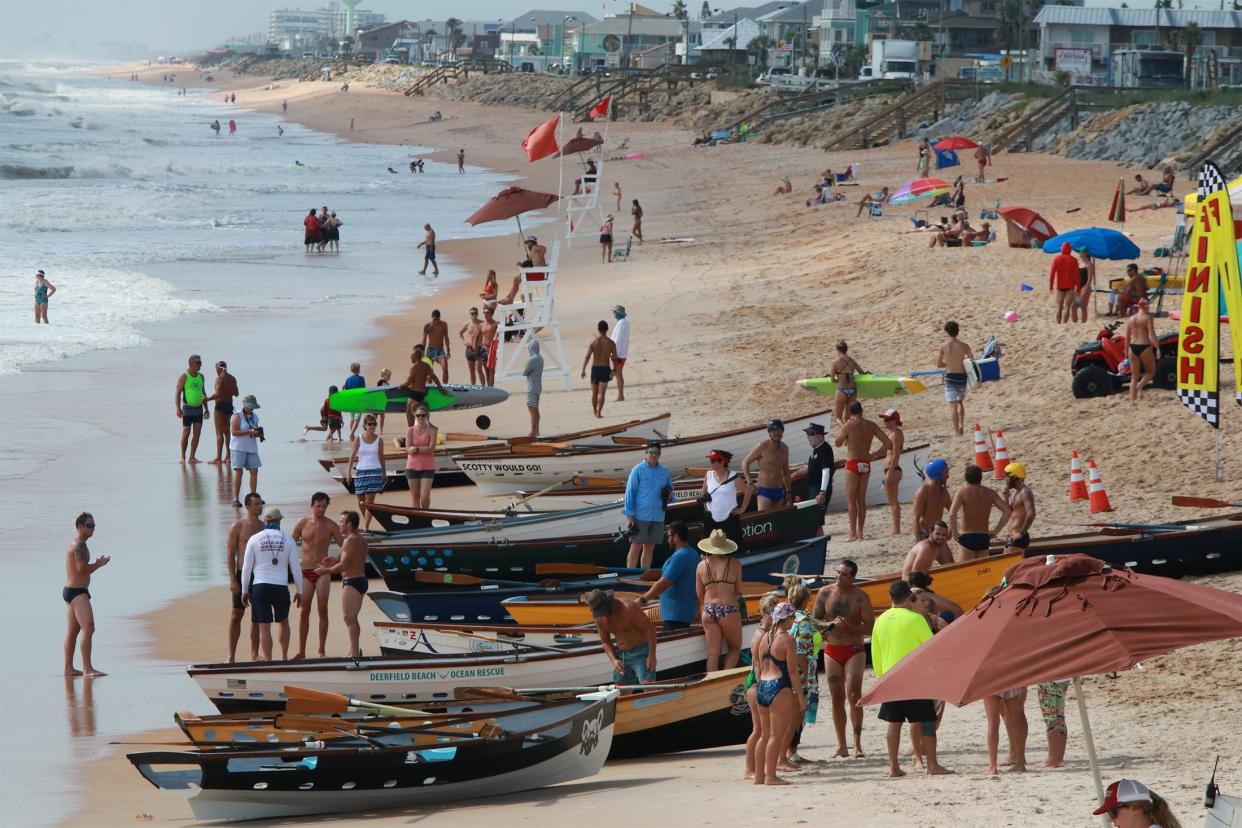Flagler official rebuts study naming county among most 'dangerous' for beachgoers

Flagler County was recently named one of the most "dangerous counties" for beachgoers nationwide, according to a study released by a personal injury law firm in Connecticut.
But a Flagler Beach official is pushing back against the firm’s use of “dangerous” when describing the local beach and pointed out flaws in the study.
Flagler ranked sixth on the list, which includes three other Florida counties.
The research carried out by Connecticut Trial Firm analyzed data from the United States Lifesaving Association “pertaining to the number of rescues seen in each county in the last 10 years” while also factoring in beach attendance, according to a press release.
Sharks, lightning, rough surf: The most dangerous beaches in Florida, by the numbers
This way, it has tried to establish “the counties in which beachgoers are most likely to be in need of rescue.”
What does the law firm’s study say about ‘dangerous counties’ for beachgoers?
Connecticut Trial Firm used data gathered from the United States Lifesaving Association — a nonprofit professional association of beach lifeguards and open-water rescuers that “works to reduce the incidence of death and injury in the aquatic environment through public education, national lifeguard standards, training programs, promotion of high levels of lifeguard readiness, and other means,” according to its website.
Going back to 2013, the data shows the number of rescues and beach attendance in counties across the country, thus determining each of these area’s number of rescues per 100,000 beachgoers.
With a total attendance of 1,065,000 over that period and 987 rescues reported, Flagler County appears at number six on the list with 92.68 rescues per 100,000 beachgoers.
Bay County is third with 115.06; Nassau County is fifth with 95.03; and Escambia County ranked eighth with 66.91.
The most “dangerous” county in America for beachgoers, according to the study, is Oregon’s Clackamas County.
In Daytona Beach: Daytona Beach at top of list of Best Places to Live in Florida by U.S. News & World Report
“With summer around the corner, vacationers and locals alike are going to be flooding towards their favorite bathing spots around the country soon,” said Connecticut Trial Firm’s Ryan McKeen in the press release. “With this, of course, come the dangers that are present, even in one of the more relaxing settings. It’s always interesting to see the places where such dangers seem to prevail most, and hopefully, this can help beachgoers and lifeguards in these areas to be prepared for potential dangers.”
Flagler Beach official and lifeguard pushes back against study
Tom Gillin, ocean rescue director for the city of Flagler Beach, said the study does not consider key pieces of information.
“There is only about 137 USLA agencies across the country,” Gillin said of the lifeguard agencies recognized by the United States Lifesaving Association. “He’s only look at the statistics of 137 beaches out of I don’t know how many thousands of beaches are out there.”

Another part of the study that Gillin said bothered him was the fact it doesn't elaborate on the information submitted to USLA, which has details pertaining to the rescues.
“When we submit our stats, they ask for an array of different things,” he said. “The number of people who visited the beach, number of rescues, number of first aid cases, number of drownings, number of drownings in an unprotected area and in the protected areas.”
Gillin pointed out that the lifeguard service in the county is only provided within Flagler Beach city limits and in a seasonal schedule — making the study’s numbers those of that city, and not the county as a whole.
Lifeguards there begin duty during weekends in May. From Memorial Day until Labor Day weekend, the city posts guards seven days a week. After Labor Day, they go back to weekends only until October.
“(They) just went and took those two bits of information — the people at the beach and the number of rescues made — and came to a conclusion. So that made me feel like they had an agenda to sway things a certain way.”
If he were to look for the most dangerous beaches in the country, Gillin said he would look for where there are the most drownings, which the study “completely ignored.”
“Over the last 10 years, you look over our number of drownings, it’s zero,” Gillin said. “Which essentially makes us one of the safest beaches you can go to.”
Report: Shark bites are up in 2023; Florida, Volusia County top list again
Gillin said it would be “fair to say we are one of the busiest beaches, because we make a lot of rescues from the number of people on our beach, and I think one the main reasons for that is we get a lot of tourists on the beach that don’t understand the dynamics of the ocean, and they are more likely to need assistance when they go in the water.”
He said beachgoers should always try to swim in front of a lifeguard tower if swimming at the beach.
This article originally appeared on The Daytona Beach News-Journal: Flagler beaches among most 'dangerous', says study; official pushes back

